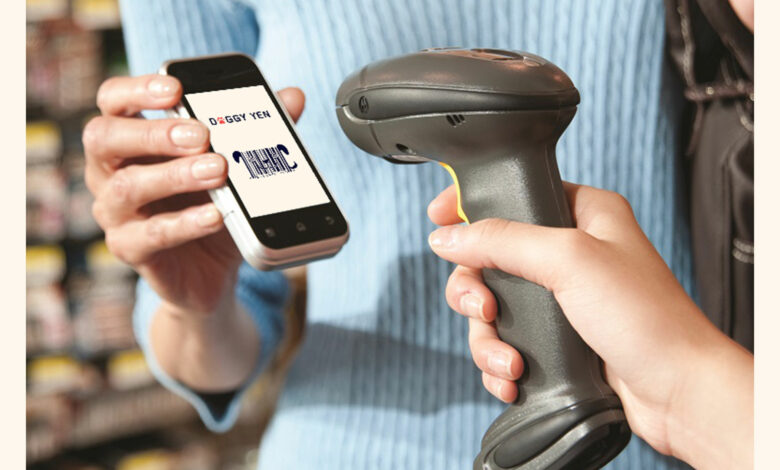
In a world increasingly reliant on digital information and seamless operations, 2D barcode scanners have emerged as pivotal tools for enhancing efficiency and accuracy across various industries.
Unlike their 1D counterparts, 2D barcode scanners can capture intricate data matrices, enabling a wealth of applications that go beyond traditional barcode scanning.
In this guide, we delve into everything you need to know about 2D barcode scanners and their transformative potential.
Understanding 2D Barcode Scanners
1D barcodes are familiar as the linear, vertical lines seen on most consumer products. 2D barcodes, on the other hand, use a grid of squares or dots that can store significantly more information than their 1D counterparts.
This extra capacity opens up a realm of possibilities for diverse applications, from inventory management to healthcare.
A 2D barcode scanner is a device designed to decode and read 2D barcodes. Unlike traditional 1D barcodes, which store limited information using a series of vertical lines and spaces, 2D barcodes utilize a matrix of squares, dots, and other geometric patterns to store significantly more data.
This enhanced data capacity allows 2D barcodes to hold a wealth of information, including numbers, letters, symbols, and even images.
Embrace Efficiency: Why 2D Barcode Scanning Is the Smart Choice
In the realm of barcode technology, the advent of 2D barcode scanning has brought about a transformative shift, offering a range of advantages that go beyond traditional 1D barcodes.
With its ability to store more information, facilitate error correction, and enable interactive experiences, 2D barcode scanning has become a game-changer across industries.
If you’re wondering why you should choose 2D barcode scanning, here are compelling reasons that make this choice a smart one.
Expanded Data Capacity:
2D barcodes possess a superior data storage capacity compared to their 1D counterparts. This means you can encode more information, from numbers and letters to special characters and even images, all within a compact code.
Enhanced Error Correction:
A standout feature of 2D barcodes is their built-in error correction. Even if a portion of the code is damaged or obscured, advanced error correction algorithms ensure accurate data retrieval.
Versatility and Interaction:
2D barcodes can encode various types of data, including URLs, contact information, and payment details. This versatility allows for interactive experiences – imagine scanning a code to access a website, initiate a payment, or receive additional information.
Efficiency and Speed:
2D barcode scanners can capture information swiftly and efficiently. This efficiency is particularly beneficial in environments that demand rapid data capture, such as point-of-sale systems, inventory management, and logistics operations.
Comprehensive Inventory Management:
With the ability to store vast amounts of data, 2D barcodes excel in inventory tracking and management. Consequently, businesses can monitor stock levels, track expiration dates, and optimize supply chain operations with ease.
Security and Privacy:
2D barcodes can be encrypted to secure the stored data. This feature is invaluable for applications involving sensitive information, such as payment processing or personal identification. The encryption adds an extra layer of protection to ensure data integrity and privacy.
Key Advantages of 2D Barcode Scanners:
In addition to their expanded data capacity, 2D barcodes offer robust error correction. Furthermore, their versatility, efficiency, and enhanced inventory management capabilities make them invaluable in various industries.
- Data Density: The primary advantage of 2D barcodes is their ability to hold a vast amount of data, including numbers, letters, symbols, and even images. This capacity makes them invaluable in industries where extensive data needs to be stored within a small code.
- Error Correction: 2D barcodes incorporate error correction techniques that ensure accurate data retrieval even if parts of the code are damaged or obscured. This robustness is especially important for critical applications where accuracy is paramount.
- Versatility: 2D barcodes are capable of encoding various types of data, including URLs, contact information, and payment details. This versatility enables interactive and dynamic experiences, such as scanning a barcode to access a website or make a payment.
- Efficiency and Speed: 2D barcode scanners can capture information swiftly and efficiently, making them invaluable in environments that require rapid data capture, such as point-of-sale systems and logistics.
- Enhanced Inventory Management: With their ability to store large amounts of data, 2D barcodes facilitate comprehensive inventory tracking, enabling businesses to manage stock levels, monitor expiration dates, and streamline supply chain operations.
Applications of 2D Barcode Scanners:
- Healthcare: In the medical field, 2D barcodes play a pivotal role in patient identification, medication administration, and specimen tracking. Healthcare professionals can access patient records, medication details, and treatment plans with a simple scan.
- Retail: 2D barcodes are used for inventory management, price checking, and improving the customer shopping experience. QR codes on product labels can offer product information, promotions, and reviews.
- Logistics and Warehousing: 2D barcodes streamline tracking and tracing processes, enhancing visibility and efficiency throughout the supply chain. They provide accurate and real-time information about shipment status and location.
- Manufacturing: In manufacturing, 2D barcodes assist with product traceability, quality control, and assembly line processes. They help ensure that each component is correctly placed and that the final product meets quality standards.
- Ticketing and Access Control: 2D barcodes are used in event ticketing, transportation systems, and access control. Scanning these barcodes grants entry to events, venues, and public transportation.
Wrapping up:
The adoption of a 2D barcode scanner has revolutionized industries by offering expanded data capacity, error correction, and versatility. Therefore, from healthcare to retail and logistics, the advantages of 2D barcode scanning are clear. Embracing 2D barcode scanning is not just a choice; it’s a leap into the future of efficient data handling and communication.
Read More: Try Outsourcing the Application Security Testing and Here Is Why?




